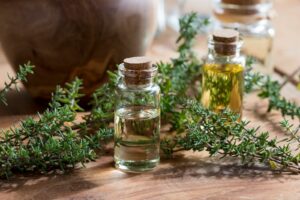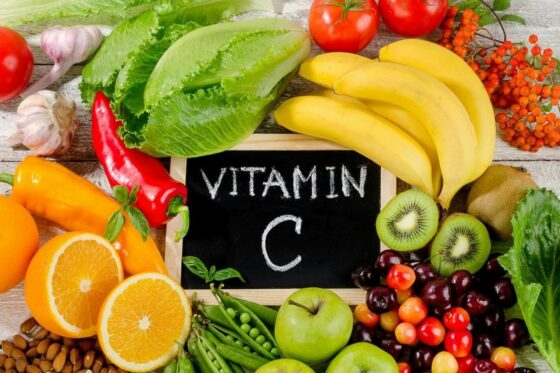Iron-rich vegetables: which vegetables contain the most iron?
Iron is an essential building block of the human body. Here are ten of the best iron-rich vegetables to help you meet your daily needs.

Our bodies require iron to function properly, and without enough, we often feel weak and fatigued. It is important to combat an iron deficiency early by eating well. There are plenty of iron-rich vegetables that can help with this. Here are ten of the best!
Contents
Why is iron so important?
Although we have low concentrations of iron in our bodies, the trace element is essential to our metabolism, growth and development. For one, iron facilitates haemoglobin production. Haemoglobin is a protein found in red blood cells that transports oxygen throughout the body. Athletes, in particular, rely on iron to maintain muscle and joint health.
Iron is also implicated in a vast array of other bodily functions, including DNA synthesis and nerve cell signalling, and as such, iron deficiency is not pleasant. Symptoms include tiredness, fatigue and paleness in the first instance, and, in more serious cases, (mucous) skin disease, brittle nails and hair growth disorder.
The NHS recommends that men consume 10mg of iron per day, and women 15mg. To ensure you have enough iron in your body, it is important to eat well. Meat is particularly rich in iron, however vegetables serve as a perfect complement or alternative to a steak.
Note: Our bodies do not respond well to an iron overload, which can induce diarrhoea and vomiting. But have no fear, it is almost impossible to eat too much iron! Instead, incorrectly dosed iron supplements, or illness, are most likely to cause an iron overload.

Which vegetables contain a lot of iron?
For humans, meat-based iron is easier to process than vegetable iron. This is because our bodies must convert vegetable iron into an absorbable form, before the iron can be used. This process is not as complicated as it sounds, but does rely on vitamin C. As such, it is important to combine iron-rich vegetables with food containing vitamin C.
Foods high in phytate (e.g. beans, seeds and nuts), tannin (e.g. strawberries, blueberries and apricots), phosphorous (e.g. whole grains, pumpkin or sunflower seeds) and oxalic acid (e.g. beetroot, rhubarb, beet greens) inhibit iron absorption. As such, to boost your iron intake, it is best not to combine iron-rich vegetables with these food groups.
1. Kidney bean
With a full 8.2mg of iron per 100g, kidney beans (Phaseolus vulgaris) top our list! In fact, kidney beans have almost four times as much iron as a pork cutlet of the same weight. Admittedly, kidney beans are also high in phytate, which inhibits iron absorption, but this is more than made up for by the bean’s protein and complex carbohydrate content.
Tip: Several other bean varieties, including white beans, are also excellent sources of iron.

2. Lentil
Lentils (Lens culinaris) are not only flavourful, but healthy. Importantly for us, they contain approximately 8mg of iron per 100g when dried. Again, like kidney beans, lentils’ have a high phytate content, which inhibits iron absorption to some extent. However, these iron-rich vegetables are also an excellent source of protein, potassium, calcium and zinc.
Tip: You can easily grow lentils in your garden!
3. Chickpea
Chickpeas (Cicer arietinum) are another fantastic source of iron. When dried, they boast 6.1mg of iron per 100g. Once more, not all of this iron will be absorbed, because chickpeas have such a high phytate content. However, these protein-rich legumes are packed with vitamins and important minerals such as zinc, potassium and magnesium.
4. Spinach
For a long time, spinach (Spinacia oleracea) was thought to have an exceptionally high iron content. This is a myth, however, and probably originated from a calculation error. Nevertheless, spinach does contain about 3.4mg of iron per 100g when fresh, and is rich in folic acid, potassium and magnesium. And although spinach does contain oxalic acid, which can slow iron absorption, it is also packed with vitamin C, which promotes iron absorption.

5. Black salsify
Black salsify (Scorzonera hispanica) is not well-known. However, this impressive vegetable is exceptionally tasty and iron-rich; containing about 3.3mg of iron per 110g. In addition, black salsify is packed with fibre, important vitamins, like A, E and C, and minerals, including potassium.
6. Chard
Chard (Beta vulgaris subsp. vulgaris) contains 2.7mg of iron per 100g, and plenty of vitamin C, which promotes iron absorption in the digestive tract. This iron-rich vegetable is also full of minerals, like magnesium, calcium and sodium, and numerous vitamins.
7. Lamb’s lettuce / Corn salad
Lamb’s lettuce (Valerianella locusta) is a very popular leaf – and no surprise. It is delicious, healthy and easy to grow at home! What is more, fresh lamb’s lettuce contains 2.0mg of iron per 100g. It is packed with vitamin C, which supports iron absorption, as well as vitamin A, folic acid and magnesium, making it a great source of nutrients throughout winter.

8. Green pea
Green peas (Pisum sativum) are not only delicious, but extremely healthy. In addition to fibre and protein, peas contain between 1.5 and 1.9mg of iron per 100g. Furthermore, peas are particularly good at balancing phytic acid, which reduces iron absorption, with vitamin C, which boosts iron absorption.
9. Kale
It is well-known that kale (Brassica oleracea var. sabellica) is rich in vitamin C . But did you know kale is also packed with iron; about 1.5 to 1.9mg per 100g to be precise? Because of its high vitamin C content, kale facilitates iron absorption and is great source of beta-carotene and healthy mustard oils.
10. Rocket
With its pungent, aromatic flavour, rocket (Eruca vesicaria subsp. sativa) is a very popular salad leaf. Low in calories, high in healthy mustard oils, beta-carotene, vitamin C, potassium and calcium, rocket is also a great source of iron, fitting 1.5mg of the trace element into 100g of leaf. In sum: it is a fantastic addition to any diet!

Our bodies need more than iron to remain healthy. Why not find out why we need zinc to develop properly, and which fruits and vegetables are packed with zinc.



























